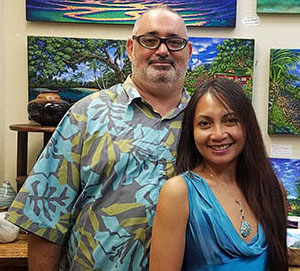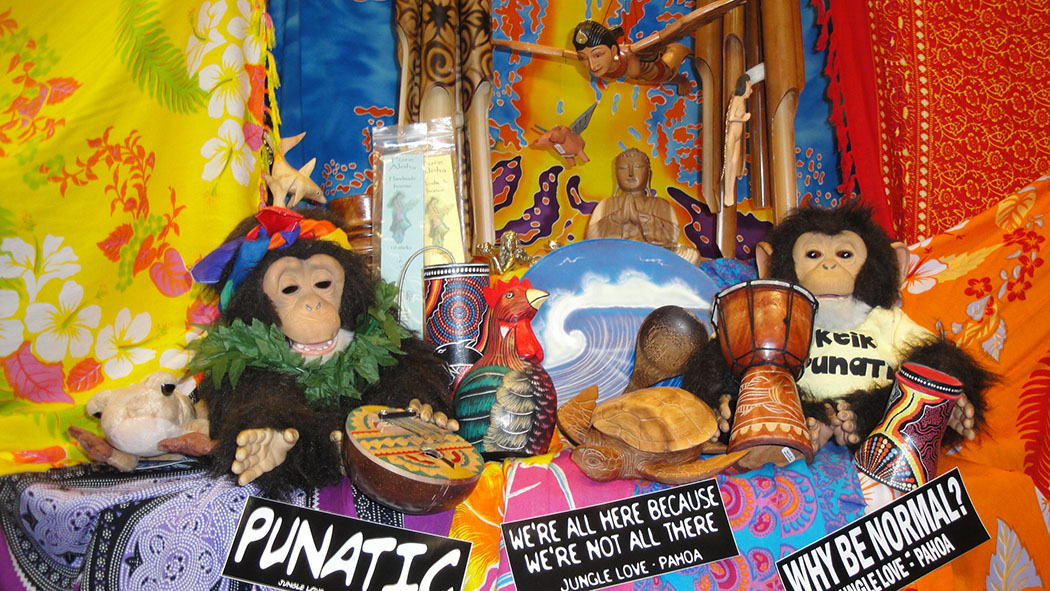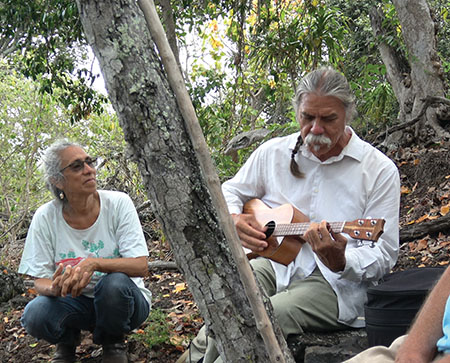
Try Look Inside: Yvonne and Keoki Carters’ Artistic Life

By Ma‘ata Tukuafu
A life with deeper connection is what husband and wife team Yvonne Yarber Carter and Keoki Apokolani Carter strive for. With their creation of original music, their professions in land-based cultural education to steward native plants, trees, and ‘āina (land) in Hawai‘i, and their beautiful photo images, the Carters maintain a lifestyle that is both diversified and balanced.
Yvonne and Keoki grew up on O‘ahu, and both attended Waianae High School, although they only knew of each other from a distance in what was a small rural community in the 1960s.
Yvonne attended the University of Hawai‘i at Mānoa during a culturally explosive time, and became a planner intern in the Waianae Model Cities Program, part of a nationwide federal anti-poverty and community leadership building experiment.
“My career hasn’t been a straight trajectory,” says Yvonne. “With Model Cities, I learned about community building, activism, training in land issues, and about where our water came from. It was mind opening and provided a good foundation, but art and education spoke to me more than becoming a city planner.”
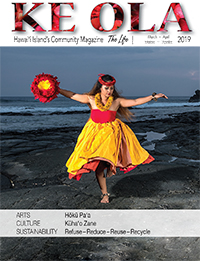
Yvonne loved writing. While tutoring in Kalihi at Dole Intermediate, she saw students respond to new curriculum that was being pilot tested. The school added a new unit that included art, writing, and local culture. Yvonne says, “That spark fueled my imagination and desire to be part of something that could make a difference. I volunteered to help write or edit new materials which was just one of several projects at the UH Mānoa Curriculum Research and Development Group [CRDG]. Soon they offered me a contract to develop some small booklets for one of their units.”
Yvonne’s work at CRDG led to a full-time job to help create the Hawaii Multicultural Curriculum Project. “The opportunity to be part of a groundbreaking intiative to create culturally diverse and locally relevant school materials was such a big deal to someone like myself who grew up with school materials reflecting only a faraway monoculture that looked nothing like the world I knew,” shares Yvonne.
Family oral histories with photo documentation were another component of the curriculum. They provided a rich reflection of local lifestyles, where there had long been a void. For Yvonne, this brought together a childhood love of photography and the urgency of capturing stories of kūpuna (elders).
A drive to learn more of the world, experience wilderness, and to live an artist’s life was brewing for Yvonne. After meeting two film makers, she left the comfort of the university system and headed to rural Alaska, never thinking that for the next 18 years sheʻd be living a subsistent life in a small riverside village, working on oral histories of the village elders for the Yukon Koyukuk School District.

As Yvonne was weaving her artist’s journey, Keoki says college was never a thought for him as he graduated from high school. Instead, Keoki joined the US Air Force where he was trained to be a search and rescue helicopter mechanic. The experience of going to North America and Asia opened his eyes to the world. It also made him realize how different Hawai‘i is from other places. He says, “I joke that you have to go away to know what you really love about home and for all the different kinds of locals to really become one ‘ohana and really appreciate each other.”
After the military, and still in his 20s, Keoki worked many different jobs in the construction industry, ultimately as a cabinet maker. One day, working on a tall building in Spokane, Keoki found himself watching young kids on the street. “They should have been in school, but were just hanging out and working their way into trouble. Thatʻs when I wondered how I could help make a difference. So I started going to community college part time while still working construction. Thatʻs the long road to getting a teaching degree,” says Keoki. Eventually he earned his degree and taught wood shop and industrial technology at the high school and community college levels.
While building cabinets and doing woodwork on the side, Keoki explains, “I started wondering more about this thing we call wood. The thought wouldnʻt go away. What is this tree all about? Thatʻs when there was really something I wanted to understand and learn. I started looking into programs and scholarships.” He settled on graduate school at Oregon State to study wood anatomy.
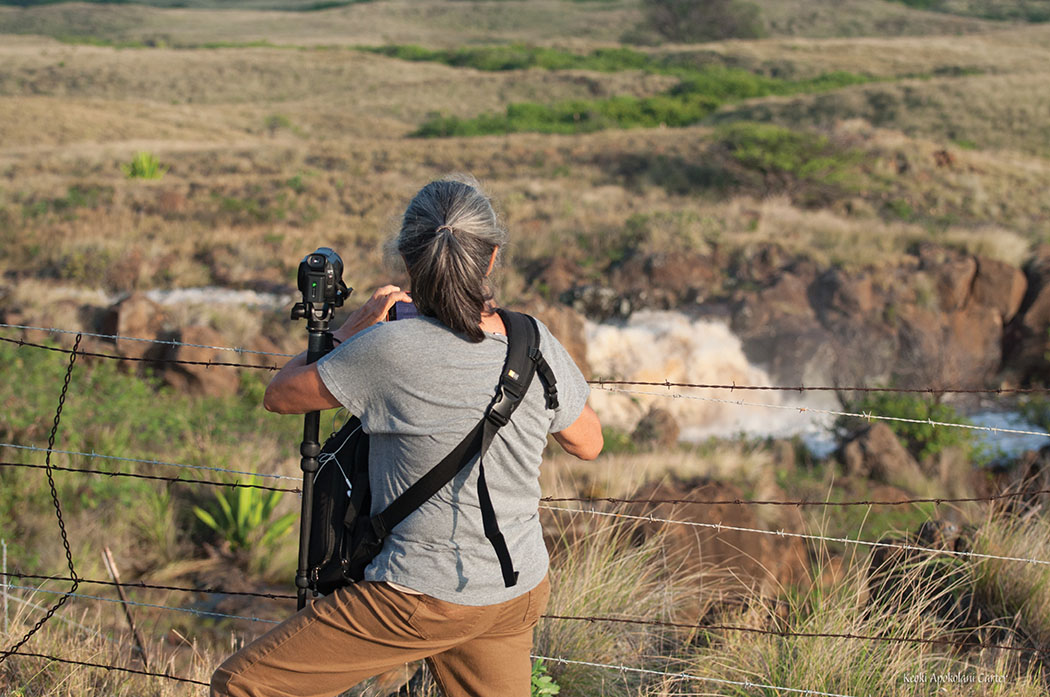
Education and ‘Āina
Yvonne and Keoki reconnected in 1994, came to Hawai‘i Island, and married.
The Carters became involved with the startup of Kanu o ka ‘Āina as an academy, two years before it became a Hawaiian Charter school. Keoki created a unique program that included woodworking, math, and English. His curriculum and projects included fundraising for a yearly trip to Honolulu to compete in a carpentry competition known as VICA; building computer stations for the shop; learning design, carving and printmaking; and basic construction principals. “Keoki’s curriculum would bring in many elements. I would help with the art and media aspects,” says Yvonne. Their teaching collaboration and deep appreciation of the ‘āina moved them to work with the dryland forests on the island.
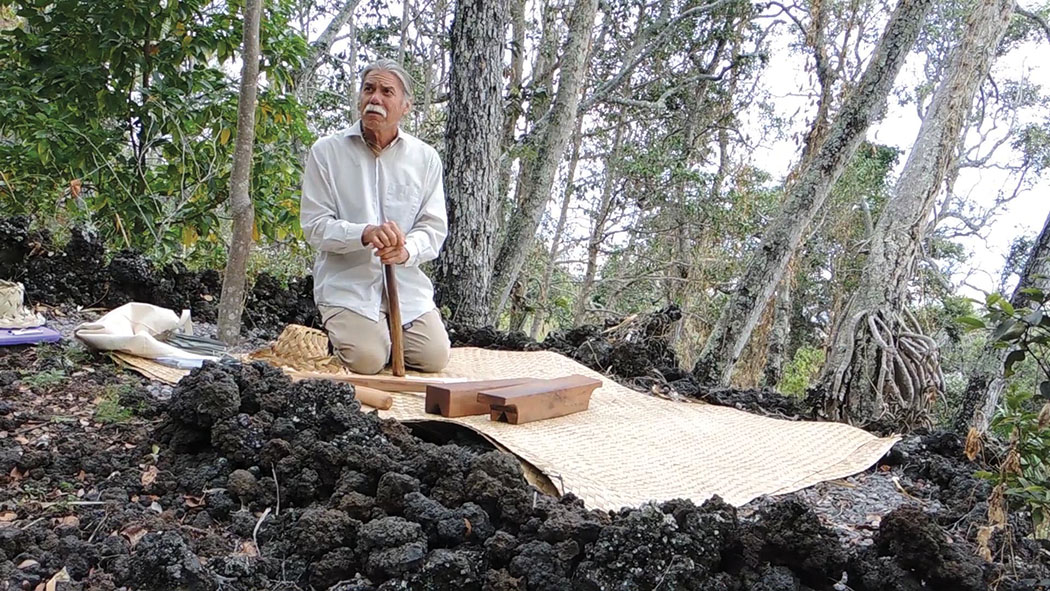
In 2002, they began an outreach program known today as Ho‘ola Ka Makana‘ā with the Hawai‘i Forest Institute and also an ‘Āina Ulu land-based bio-cultural education project on Kamehameha Schools lands. This site is one of the healthier remnants of a highly endangered ecosystem know as tropical dryland forest. The couple’s focus has been to educate others of the plight of the tropical dryland forest, gather like-minded people to assist with caring for and replanting the endangered trees, and encourage respect between people and place.
“Our teacher, Papa Henry Auwae, was 96 years old when he passed,” Yvonne says. “He would tell his students to ʻknow the purpose of your actions’ and that we are one small part of this whole weave. What moves me is to create educational resources that makes one think about what we do. What is the role of that ancient ‘uhiuhi tree? Could we have a forest like that again?”
Creativity Weaves in Artistic Patterns
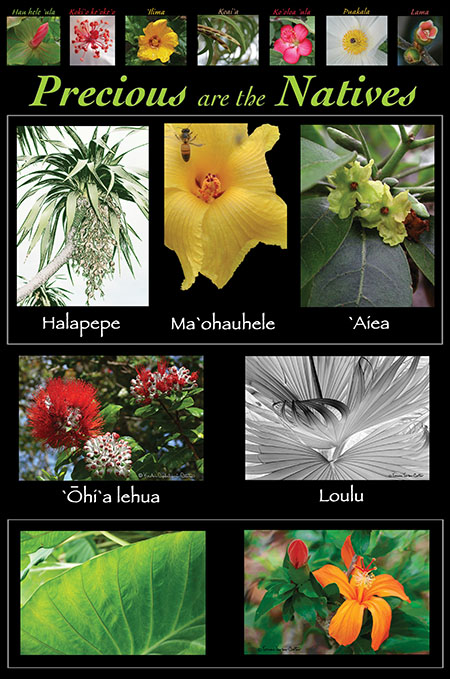
Yvonne’s interest is in graphics, and creating artistic expression to tell stories by becoming sparser with words and using compelling imagery and photos. One example Yvonne gives is meeting with the dryland forest team to create eye-catching, readable information on important topics.
Keoki says as years have passed, they are less hands-on in the physical forest as the project has grown and younger ones move into the leadership roles. Instead, the couple works on planting the seeds of wellness for body, mind, and spirit. One of Keoki’s teachings is to ask students what they need to feed their spiritual side, so they may continue to be healthy and thrive.
“I bring music into the forest. I nourish my spirituality that way and share whatever comes,” Keoki explains. “Sometimes I get the groups humming or singing, to do something sweet in the forest.”
About 10 years ago, Keoki and Yvonne had an “aha moment” when, after helping students discover their potential, they thought, “Well, what about our own potential?” Remembering Papa Auwae’s teachings, they decided to live by example and created a website that offers their multi-media design, fine arts, photography, and interpretive signage.
Music Becomes Them
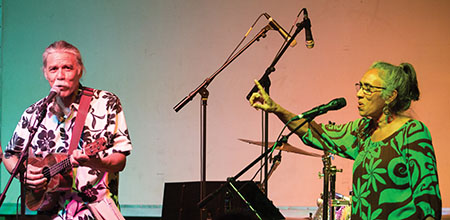
photo courtesy of Richard Russell, Anna Pacheco
Both Yvonne and Keoki grew up in musical households, yet it is only in the last few years they have returned to writing, singing, and recording their music. For Keoki, his music came back during a period of grief. Not realizing how broken he was after the deaths of many loved ones within a short period of time, he began playing and singing out of his heart, as a new song came for each person who had passed away.
Out of that grief came healing. “The songs just came through all at once, one after another. How it happened, I don’t know…but I call them gifts,” says Keoki.
In 2012 Yvonne and Keoki, as Apokolani, released their first CD, Red Wine and Blue Skies and became finalists in the 2013 Nā Hōkū Hanohano Awards jazz category. They are currently working on three more CDs, all very different from each other.
The thread that consistently weaves through the creative work Yvonne and Keoki produce is balance, cohesiveness, and artistic expression. Their dedication to wellness and harmony, both for people and place, is captured perfectly with their try-look-inside interpretation. Yvonne explains, “It describes a relationship between what we see, how we live, and how to look deeper than the surface to realize our connection and exchange with the things around us.” ❖
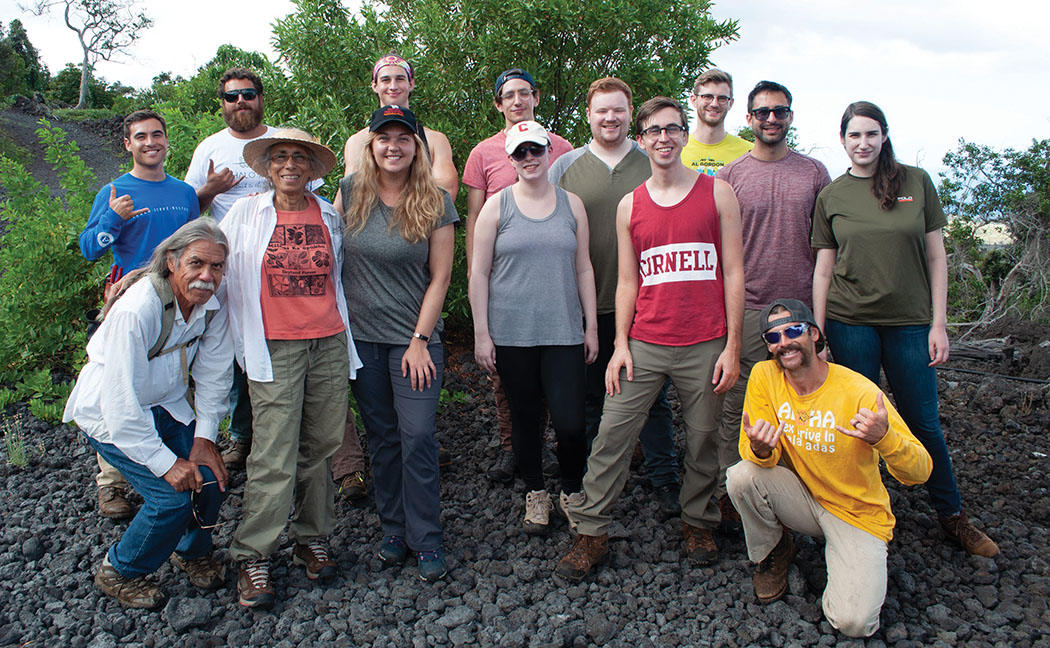
For more information:
trylookinside.com
drylandforest.org
